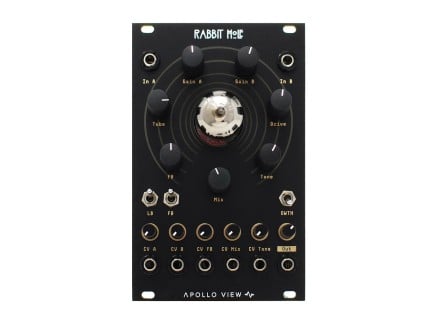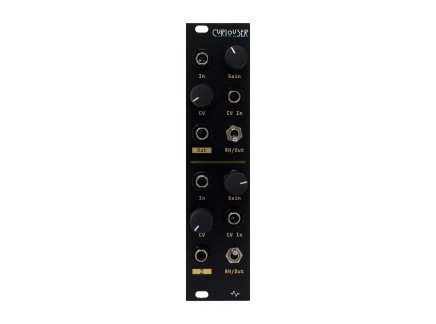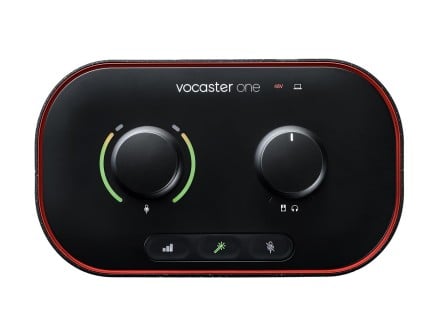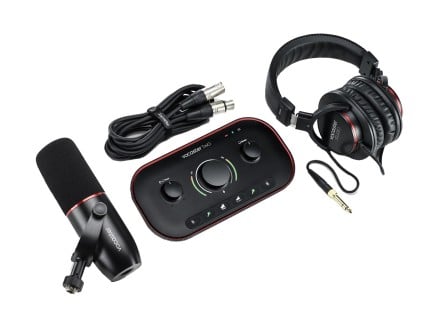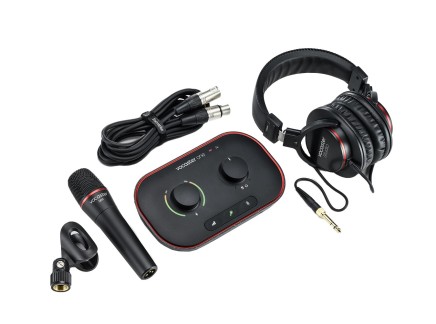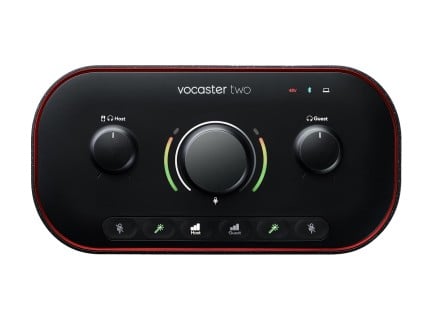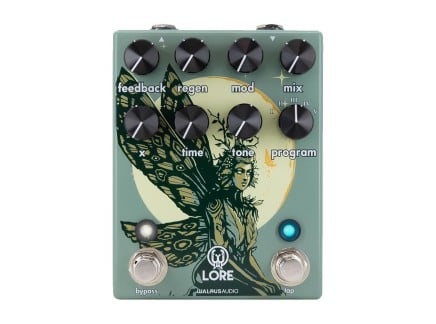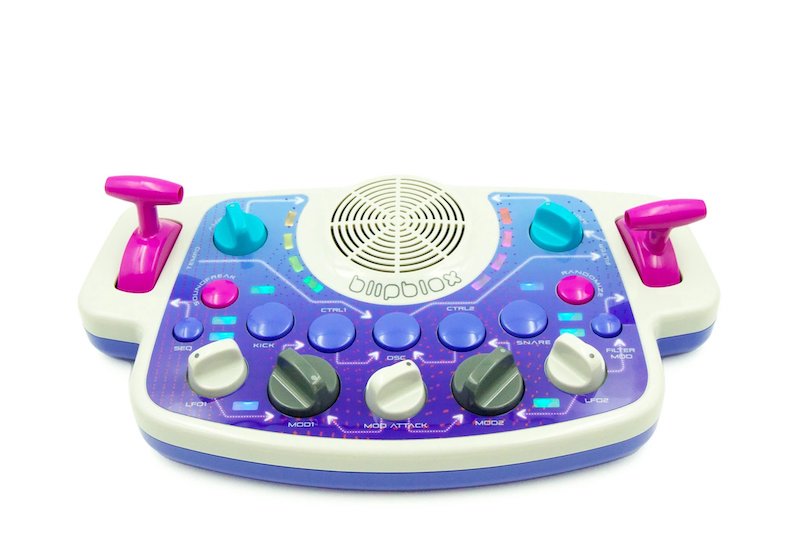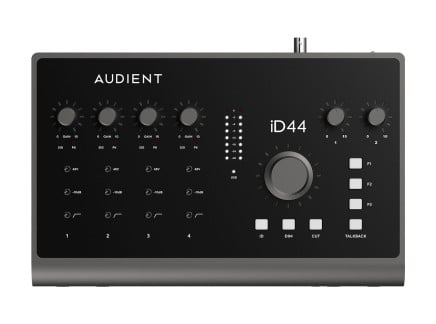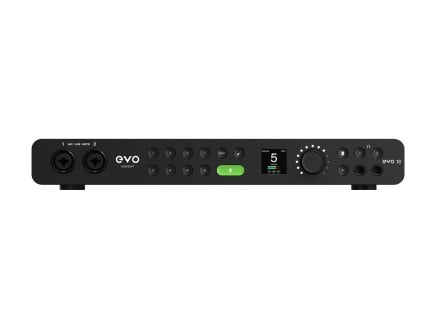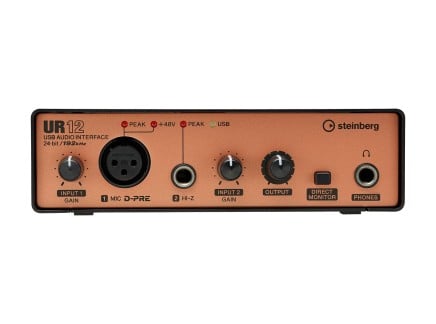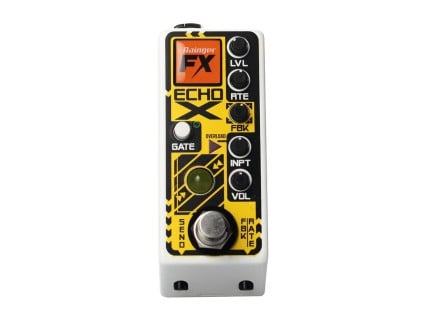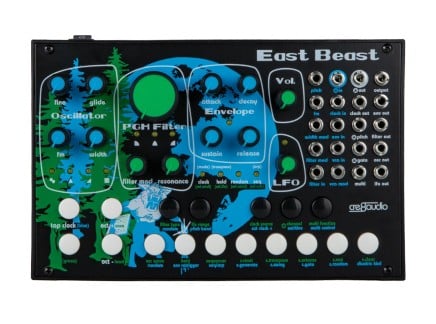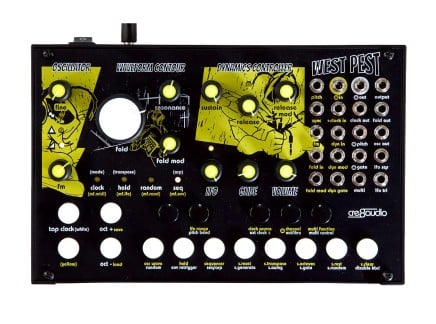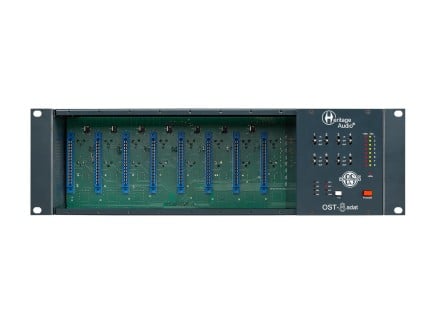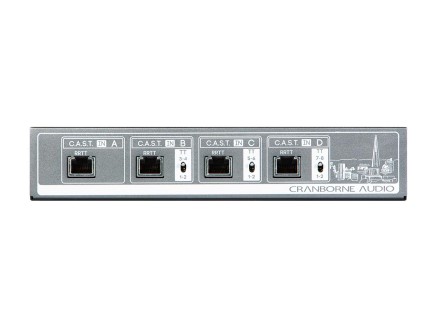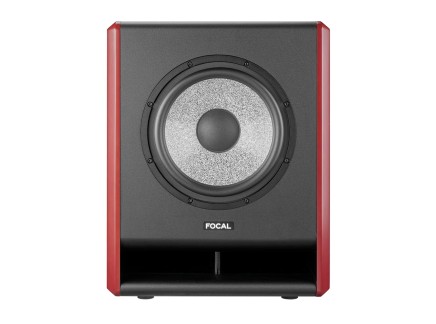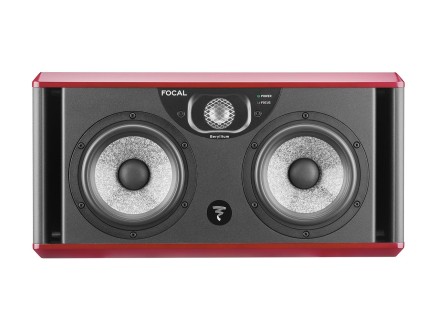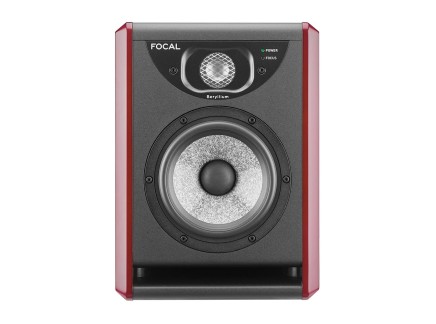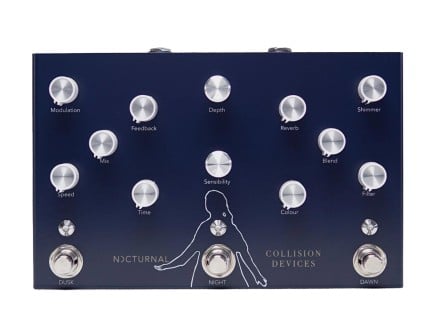NAMM is back! For the first time since 2020, the National Association of Music Merchants is assembling in Anaheim, California to show off their latest wares. For decades, the NAMM show has been the definitive place for exciting new announcements in the world of musical instruments and music technology—and we're beyond excited to see it back in full force. The show is running all weekend—and we're already starting to see information about new releases coming out.
Of course, quite recently we saw an enormous new range of products at Superbooth 2022, where many of our friends in the synthesizer industry showed off their most compelling new offerings. But I suspect that we'll still see a number of exciting new developments this week as well—so in this article, we're reporting on all the new product developments we see around NAMM this year. This will include new product announcements in general, as well as new product announcements directly at the show. So keep this tab open in your browser...we'll keep updating this article as more information becomes available.
Apollo View: Eurorack Gets Curiouser and Curiouser
Apollo View Modular is a newly-emerged boutique manufacturer of Eurorack synthesizer modules from the United Kingdom…and they've made an impressive entrance into the modular world with Rabbit Hole and Curiouser. Rabbit Hole, a phrase that has so often been used to describe one's experience of journeying into the Wonderland of Eurorack, has finally been used as an official name of a module—and, oh boy, what a module it is.
Rabbit Hole is an expandable summing mixer with two default VCA channels, and a hybrid vacuum tube/solid-state circuitry. Even a single look at its front panel, proudly boasting a 12AU7 tube right at the center, makes it clear that this module far exceeds the expectations of a conventional utility, and no doubt it can throw a serious sonic punch.
Surrounding the vacuum tube are seven parameter controls: Gain A, and Gain B for each of the VCA channels, Drive, and Tube for each of the distortion stages, Tone for crossfading between high-pass and low-pass filters, as well as feedback amount (FB), and dry/wet Mix. Below the parameter knobs are three switches: L8 changes tube character, FB turns on feedback, and finally OWTH (Off With Their Heads) engages the diode LED clipping circuit which yields even more absolutely unapologetic sonic destruction. Nearly every control on the module can be modulated with CV signals, and the modulation amount can be set directly on the module via attenuators. With such a wealth of options, Rabbit Hole serves as a highly flexible framework for analog sound processing. It can act rather gently by subtly enriching any sound with harmonics, and adding a tint of the desirable analog warmth. However, when you are ready to wreak havoc a couple of switch flips, and clockwise knob turning moves will set you on a way.
Curiouser is a trusty companion for Rabbit Hole, adding two more channels to the mixer. Up to two Curiouser modules can be linked up with a single Rabbit Hole, collectively making up a comprehensive six-channel analog summing mixer and sound processor. Curiouser can also be used independently as a dual VCA…and for maximum flexibility, switching between expander or independent operation modes can be done right from the front panel.
Without a doubt, with their debut release, Apollo View enriched the land of Eurorack with what is perhaps one of the most unique mixing solutions available. The Rabbit Hole/Curiouser combo is simultaneously a functional utility, and a highly creative sound processing device that will be a welcome addition for anyone who has an appreciation for analog sound, and distortion effects.
Artiphon Orba 2: A Little Ball of Sonic Delights
When Artiphon's Orba first came onto the scene a few years ago, it caught the attention of dedicated producers, casual musicians, and total newcomers alike, providing a unique approach to music-making in a cute, compact package fitting in the palm of your hand. Now, Artiphon presents Orba 2: a version with more power and features.
First off, what is Orba? Designed as a sort of gestural instrument, this round, handheld friend is an instrument, looper, and MIDI controller all packed into one box, or should we say, orb. Nine gestures like taps, shakes, and more impart different results into your jams, whether you're using the built-in looper or controlling hardware instruments or a DAW. There's a built-in speaker to easily play with friends on the go, and the Orba App connects via wireless pairing to customize Orba to your needs.
The original Orba isn't going anywhere, but Orba 2 aims to deliver an enhanced version of the experience. In addition to the built-in synthesizer, Orba 2 contains a sampler to record your own sounds, as well as a number of pre-loaded factory samples to play guitars and other instruments out of the box. The looper has also been drastically expanded, with maximum duration increasing from eight bars to an impressive 128, plus the option to enable automatic quantization to ensure your loops are always in time with the music.
Orba 2 is available now, alongside the original version, and is sure to provide new ways to interact with your music.
All the Fun with None of the Fuss: Focusrite's Vocaster Series
Focusrite surprised us in advance of NAMM with an entirely new line of audio interfaces designed specifically for content creators. Tailor-made to suit the needs of podcasters, streamers, vloggers, and anyone making audiovisual content for streaming media or social media, the Vocaster series promises top-tier sound without the hassle and confusing setup that can accompany interfaces designed for use in music studios.
The Vocaster series is currently comprised of two interfaces: Vocaster One and Vocaster Two. These each have a lot of features in common: for instance, they each provide super clean XLR mic preamps with a ton of gain (70dB), making them a great choice with industry-favorite dynamic microphones. They feature several "enhance" presets, designed specifically to add pleasant emphasis to spoken word. They each have a powerful and easy-to-use auto-gain feature, which can easily set your preamps to the optimal level for your voice; and they even feature an easy mute button, great for cutting out sneezes, coughs, or unexpected audio interruptions as you're recording.
Both models of Vocaster have dedicated headphone outputs and monitor outputs, and they connect to computer via USB-C. Moreover, they can connect to external devices via a dedicated 3.5mm TRS connection, allowing you to easily record audio (bump in music? call-in guests?) from external devices. They also include 3.5mm stereo outputs for sending your audio directly into a camera—great for all you vloggers out there. There's also a dedicated loopback function, making it simple to capture audio from your computer into your recordings as well (without the need for further editing or audio routing software). Beyond that, they include a huge suite of software designed to make it simple to set up and get straight to broadcasting—no fussy setup required.
Vocaster One features a single mic input and headphone output, making it ideal for solo shows. But if you have a co-host or frequent in-person guests, you might consider Vocaster Two—which includes a second mic input with all the same niceties (enhance, auto-gain, and muting) as well as a second headphone output with independent level control. Unlike Vocaster One, it also allows Bluetooth connectivity for external devices, making it possible to record audio from your phone wirelessly rather than using the 3.5mm TRS input.
Focusrite also sells the Vocaster in two studio bundles, each of which includes a microphone, pair of headphones, and an XLR cable. Just add a mic boom arm and you're ready to go—time to get streaming. For more info, check out our dedicated article about the Vocaster series.
Taking it Back: Walrus Audio's Lore
Walrus Audio comes at us with a creative take on the classic reverb and delay combination with their new pedal Lore: a reverse soundscape generator. Instead of your standard effects, Walrus opted to focus purely on reverse delay and reverse reverb algorithms, with each of the effects having their own independent DSP chips. Spread across five modes, you get almost instantaneous access to the dreamiest atmospheres and high vibrational sonic worlds.
There is some variation on the type of reverbs and delays, too—like a mode that will turn both effects into delays with pitch shifting that are harmonically related to each other. Other modes include: Reverse Delay into Reverse Reverb, Reverse Delay into Octave Up Reverb, Reverse Delay into Octave Down, and Reverse Reverb into Forward Reverb. To combat the somewhat cold nature of the digital effects, the feedback path is all analog—giving it a nice warmth often not found in such necessarily-digital effects.
Playtime Engineering: Making Synths Fun Again
Playtime Engineering, makers of the Blipblox and Blipblox After Dark, arrive at NAMM this year to show off a couple of their new projects.
First up, the Blipblox SK2 sits in between the original and After Dark models, aimed at kids aged 8-14, but, like the others, anyone can have fun with it! It maintains a brighter color palette and wild LED lightshows, but also borrows some of the labeling from the After Dark version to provide a more informed idea of how the different buttons and levers function. Like the other models, it maintains the built-in speaker, and options for external audio output and MIDI control.
And now for something totally different: Playtime Engineering's first ever drum machine, called the Blipblox myTRACKS. Housed in a retro beige enclosure like old computers and the early AKAI MPCs, myTRACKS offers five tracks for quick, hands-on music-making with the central grid of pads. Inside are a total of 48 different instruments and 12 drum kits, which can be extended with the sampler and built-in microphone, plus two FX processors to shape and transform your sounds. myTRACKS also has over 450 different pre-written melodies to drop into your jams, because musical composition doesn't always have to be hard. Like the original Blipblox, myTRACKS has a speaker, but can also be patched out to monitors, mixers, and audio interfaces, as well as provide MIDI connectivity to get your other gear playing along.
We're still awaiting details on availability, but Playtime aims to have these new Blipboxes available by 2023.
Audient iD44 MkII + EVO 16: Top-Quality Interfaces
Rolling into NAMM this year, audio interface experts Audient are presenting two new products, continuing their journey to design modern, functional tools for the computer-based engineer with no compromises on audio performance.
Starting with an update to a favorite, the new iD44 MkII isn't just a cosmetic refresh—though we have to say that smokey grey finish looks slick—but also adds some welcome features and general performance improvements. There's still four incredibly solid Audient Console microphone preamps onboard, two JFET instrument inputs on the front, and two pairs of insert loops for pre-converter outboard processing, as well as assignable function buttons and Scrollwheel options to control your DAW and plugins away from the computer.
New to this iteration, though, is the addition of audio loopback, a feature that has become more prevalent for podcasting and streaming purposes, plus an additional 3.5mm headphone output tied to one of the existing outs. All in all, iD44 promises to remain as one of the most forward thinking interfaces available, and now it's better than ever.
Extending their EVO line, EVO 16 is a new flagship interface, providing premium features and generous I/O with intuitive functionality. Eight EVO preamps provide noise-free recordings, with eight TRS outputs on hand for monitoring, outboard processing, and a whole lot of other uses. Notably, EVO 16 offers a feature called Smartgain, which can apply automatic leveling to any or all of its input channels—this makes it remarkably easy to save valuable time while miking up a drum kit or tracking a vocalist. Additionally, the clean Motion UI utilizes the beautiful front panel screen to display clear labeling, signals levels, and easy access to vital parameters. Like iD44, this interface also provides loopback functionality, plus low-latency software mixing control.
We're also pleased to see that EVO 16 has a total of eight analog line outputs, despite its compact size. This makes it a great contender for complex live performance setups, multi-channel spatialization, or for complex reamping situations…all of which really get our creative gears turning. All of this places EVO 16 as a solid contender for anyone in need of an interface with generous I/O but could benefit from modern conveniences and features to make the most of your recording time.
Steinberg UR12 Audio Interface: a New Look + Podcasting Bundle
This year, Steinberg is showing off the UR12B, a new version of the popular UR12 USB audio interface with a new, bronze look. Both versions of the UR12 are dependable interfaces, providing two inputs, with Steinberg's D-PRE preamp on the microphone input, and two line outputs. In addition to solid connectivity with Mac and Windows computers, UR12 and UR12B are also compatible with iOS devices when used with a Camera Connection Kit or other USB to Lightning adapter…making them a great choice for a wide variety of recording scenarios both in the studio and on the go.
In addition to the interface itself, Steinberg also offers the UR12 Podcast Starter Pack, a complete recording bundle to get started on your journey of working with audio. Included with the UR12B is an ST-M01 microphone, plus a pop filter, mic cable, and desktop mic stand to make setup and connection easy. Whether you're getting your podcast idea off the ground, streaming on social media, or need a way to connect with friends, family, coworkers from home, the UR12 Podcast Starter Pack is a versatile assortment of tools to get the job done.
Gates, Space, and Glitch: Rainger Echo X
Rainger FX has done it again: they've made a bizarre yet awesome pedal in a ridiculously small enclosure. This time, we're talking about Echo X, a revisitation of one of their earlier pedal designs. This particular iteration is most notable for its functionality as a gated delay—but what the heck does that even mean?
On one hand, Echo X is a fairly straightforward delay: it has controls for delay level, rate, feedback, input volume, and overall output volume. Like many Rainger pedals, it also includes the Igor pressure-based foot controller, which is capable of controlling your delay rate, feedback level, or even the send level from your dry signal into the delay line. This makes it a highly playable pedal; even with your hands occupied, you can use it to do everything from expressive feedback swells and send animations to warped delay rate modulation.
But the most interesting aspect of Echo X is the gate functionality, which uses your incoming audio to tell it when to produce the delay signal. You can think of this as being similar to a noise gate—but rather than muting/unmuting your dry signal, it mutes/unmutes the delay signal so that it's only audible while you're playing. This has some practical applications...for instance, it makes it quite easy to mute your delay trails in moments where you want your musical texture to be suddenly much more sparse. On the other hand, it also has a ton of experimental applications, especially when used in conjunction with the sure-to-be-weird applications the Igor controller offers.
Of course, you can use Echo X without the gate engaged as well...but personally, I'm excited to see what all weird, glitchy, squishy, and choppy textures can result from the potential of a weird gated delay.
Cre8audio's East Beast and West Pest Semi-Modular Synths
Semi-modular synthesizers are perhaps some of our favorites. They are one of the best types of instruments for new sound explorers to dip their toes into the bottomless well of modular synthesis, and yet, they are much more than that. We like to think of semi-modular synths as complete, self-sufficient instruments with open-ended possibilities that can be enjoyed equally by artists with different levels of experience. Such a wide range of potential audiences certainly poses a challenge for manufacturers, though…as it can be difficult to create instruments that are simultaneously easy on newcomers, and full of possibilities to keep advanced users thrilled and inspired. With East Beast and West Pest, though, the fun-loving company Cre8audio seems to have succeeded. They were, however, not alone on that creative path, as the instruments were co-designed with one of the best-loved Eurorack manufacturers: Pittsburgh Modular.
As the names of the instruments suggest, East Beast and West Pest are designed around the principles of so-called East Coast and West Coast synthesis, respectively. The former focuses on traditional subtractive synthesis, where the sound is sculpted out of harmonically-rich waveforms, VCAs, ADSRs, and buttery filters. The latter entails a more esoteric approach to synthesis characterized by waveshaping, and nuanced dynamics control. While following the general trajectory of these synthesis paradigms, East Beast and West Pest remain distinctly unique instruments with novel features. Let's have a look at each synthesizer individually.
At the core of East Beast is a powerful analog oscillator which offers a selection of classic waveforms (Sine, Tri, Saw, Pulse) plus several compound waveforms, as well as pitched noise. The oscillator is followed by a lush multimode state-variable filter, which again offers the option for low, band, and high pass filter modes. Modulation-wise, East Beast features a four-stage envelope, and an analog LFO. And if that wasn't enough, the synthesizer also holds a robust arpeggiator and random generator, as well as a built-in keyboard and 32-step sequencer.
The oscillator on West Pest features three main waveforms, Sine, Tri, and Saw, and similarly to its sibling, a number of combo waveforms. At the centerstage here, though, is the wavefolder, whose importance is clearly emphasized by the size of Fold parameter knob. Another particularly fascinating part of the West Pest is the Dynamics Controller section which is a sort of Pittsburgh Modular's answer to low pass gate design with an adjustable Release stage. As a result, you get the much-adored West coast 'boingy' sound with extended functionality. Interestingly, the Dynamics controller also sports a resonance control which further emphasizes a narrow band of frequencies around the cutoff position. And similarly to East Beast, a low-frequency oscillator is also in place here, as well as a built-in sequencer, and random generator.
Both synthesizers feature a default normalled signal path between the modules, which makes them ready to play right out of the box without any patching. Once you are ready to switch things around you can easily change the default routing of the modules via the 20-point patch bay. The synthesizers include a handy one-octave keyboard directly on the panel. Alternatively, you can pair the synths up with an external controller of your choice, be it MIDI or CV/Gate.
East Beast and West Pest pack such a wealth of sonic possibilities that even the most demanding synthesist out there will find them incredibly interesting. Also important to note that many will rejoice at the price of the machines. At $249.99 as of the time of release, these are perhaps some of the most affordable semi-modular synths in history, which means that more people will be able to explore the wonderful world of modular synthesis without breaking the bank.
Heritage Audio: Powerful Studio Utilities
The pro-audio train keeps rolling through NAMM 2022, this time with a couple of new offerings from Heritage Audio.
Coming in with a product that's sure to catch the eye of many producers and engineers, the OST8-ADAT is a 500 series chassis with integrated optical connectivity. With room for up to eight 500 series modules, you can load this enclosure up with any combination of preamps, compressors, or other type of module, then use the ADAT outputs to connect with your audio interface—instantly unlocking eight more input channels.
But actually, what's particularly cool about OST8-ADAT is its flexibility in assigning input sources to the digital converters. Of course, you can capture signals after being processed by the 500 series modules, but you can also capture the raw input signals, or a secondary external input—and this is assignable on a per-channel basis. With the number of powerful desktop interfaces out there supporting optical input, OST8-ADAT is perhaps one of the best ways to get the most out of your existing rig.
If you need to pack a maximal amount of preamps in a minimal amount of space, Heritage Audio's other big NAMM release, Súper 8, might be the solution you've been looking for. With eight preamps based on their HA73 design, Súper 8 delivers superb sound and flexibility for any sound source.
Additionally, there's onboard digital converters which provide ADAT, AES/EBU, as well as BNC Word Clock outputs, so these preamps will play nicely with other members of your studio. And like the OST8-ADAT, you can choose whether each channel sends the preamp output or a secondary audio input to the converters.
Modern studios need more flexible tools than ever, and so seeing companies like Heritage Audio rise to the occasion is a wonderful thing to see.
C.A.S.T. Away with Cranborne Audio
Cranborne Audio is known for having high quality creative ways to connect all your gear, and this year they debuted their N8 C.A.S.T. system: a great way of bringing your entire studio together. For those not familiar with the C.A.S.T. system—it's an audio routing solution utilized in many Cranborne products, eliminating the need for bulky, expensive audio snakes in favor of dedicated routing boxes that connect together with affordable, easy-to-procure, shielded networking cables (Cat 5, Cat 6, or Cat 7). Moreover, it makes it possible to connect remote snake boxes to Cranborne's own series of interfaces/500 Series chassis.
The new N8 C.A.S.T. distribution hub allows you use their existing routing technology with any audio interface—previously, if you wanted to make use of their technology, you needed to have their own interfaces or 500 series ADAT rack. Now, you can simply grab one of these inexpensive boxes or their C.A.S.T. intro bundle and you're good to go.
On the N8, connections are provided by DB25 connections, which helps keep its form factor slim. The entire system is also passive, and can easily pass 48V phantom power. Creative routing solutions for large or small studios might not seem the most exciting, but as we said above, they can be tremendously useful. With this addition, large, heavy, expensive snakes will soon become a thing of the past.
Focal's ST6 Series: the New Monitors in Town
Focal's SM6 has been a fixture in professional studios for years and with good reason: they are attractive, sound transparent, and do not fatigue the ears. This year Focal has somehow topped themselves with the new ST6 lineup, which takes on a familiar form factor and aesthetics, but adds a whole host of new features.

The biggest addition is the Focus mode, which disables the tweeters, shifting the woofers to act as full-range drivers, thus narrowing the scope of the frequencies to simulate listening on consumer-grade sound systems. That's pretty rad—mixing in this way becomes simple, because you don't need to have an extra pair of low quality speakers or listen off your phone. This significantly streamlines the process of completing a track.
Focal has their eye towards professional sound and game studios, as well, by adding wall and ceiling mounts to the Solo6 monitors, while suggesting that they are perfect for a Dolby Atmos mixing studio. The idea of having three Twin6 monitors up front, their new Sub12 for the lows, and eight-to-ten Solo6s floating around your head sounds like a luscious cocoon of sound. Their signature Beryllium tweeters have also been redesigned with a housing that allows for better sound dispersion throughout your studio space.To top it all off, a switchable standby mode is available on the speakers to save energy when your not in the studio or if you're only using a single pair.
Oh, and they still look beautiful with that warm, red wood that adds a bit of class to any space.
Long Live MIDI: Conductive Labs MRCC µ88 and XpandR 4x1
Conductive Labs, now well-known for their complex algorithmic MIDI Arpeggiator NDLR, has come to NAMM with yet another set of powerful MIDI utilities: the MRCC µ88 (micro 88) and a new expander for their MRCC MIDI Router Control Center. The MRCC itself has made quite a splash here at Perfect Circuit: for folks with complex MIDI setups with multiple instruments and multiple controllers, it provides a powerful means of routing, merging, USB hosting, and much, much more.
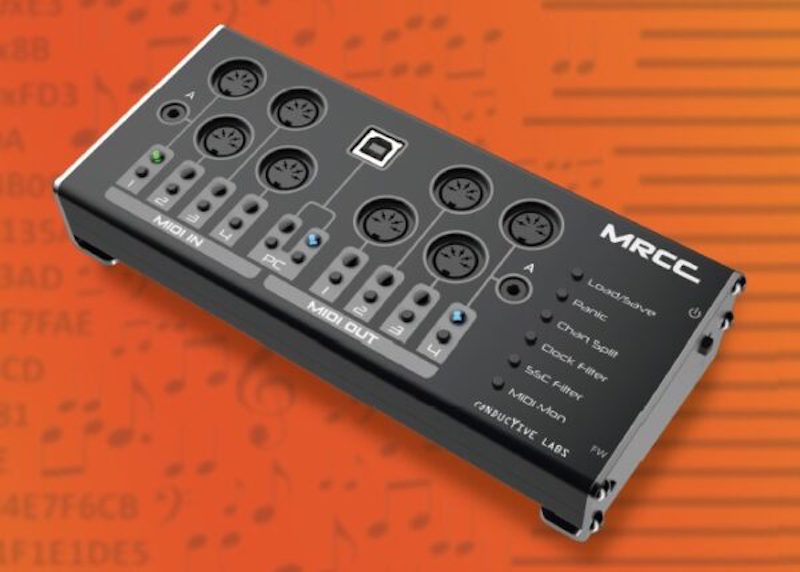
The new MRCC µ88 has us particularly excited. Much like a smaller version of their flagship MRCC, it provides an insane number of MIDI routing options—but this one features considerably fewer input/output channels, making it a great choice for folks with a smaller setup, or for tying together a live performance rig. It features four 5-pin DIN inputs (one of which offers a shared 3.5mm TRS MIDI input), four 5-pin DIN outputs (one with an optically-isolated 3.5mm thru connection), and four USB MIDI virtual ins and outs. It can connect to a computer via USB-B, making it an excellent choice of USB MIDI interface...but it can also be used completely standalone, great for routing data between hardware devices with astonishing flexibility.
Frankly, the options available with MRCC and the new µ88 are astounding. Featuring dedicated per-port routing buttons, it's easy to direct data to/from any desired location; this allows easy "thru"-like connection, and even merging multiple MIDI source to a single destination. You also have access to data filtering, channel split, and much more...it's honestly pretty incredible.
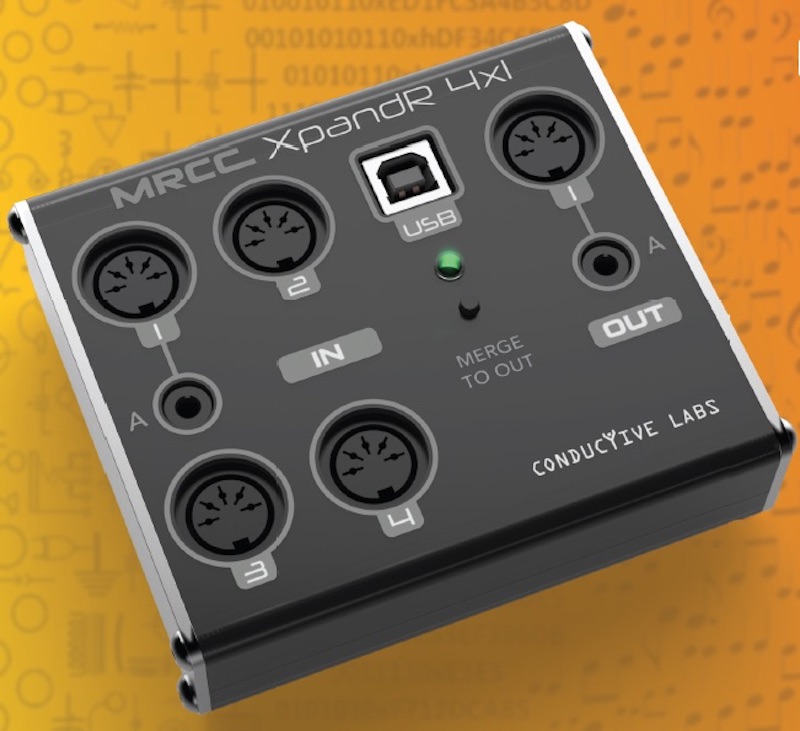
For those with more extensive setups, they've also introduced the MRCC XpandR 4x1, an expander for the MRCC which adds four DIN inputs (one of which features a shared 3.5mm TRS connection), as well as a single DIN output (with 3.5mm Thru connection). It connects to the MRCC using the MRCC's USB ports—so it's actually possible to add up to four XpandR 4x1s to a single MRCC. Beyond that, you can actually connect the XpandR 4x1 directly to your computer via USB, allowing it to act as a dedicated, class-compliant MIDI interface. Pretty snazzy.
If our experience with NDLR is any indication, µ88 and XpandR 4x1 are going to be super solid and insanely useful. Truthfully, I'm eyeing that µ88 myself. We're not quite sure yet when these will be available for order...but our eyes are open.
Wavetables Are Back for More: Groove Synthesis 3rd Wave
NAMM newcomers Groove Synthesis are showing off their very first product this year, and boy, is it a good one. The aptly named 3rd Wave is a feature packed hybrid synthesizer, delivering the tried-and-true combo of wavetable synthesis and analog filtering in the vein of legendary instruments like the PPG Wave. Though this might be the first time you've heard of Groove Synthesis, the designers have prior experiencing designing with staple brands like Sequential and AVID/Digidesign, which proves their up to the task of delivering a high-quality, pro-grade instrument.
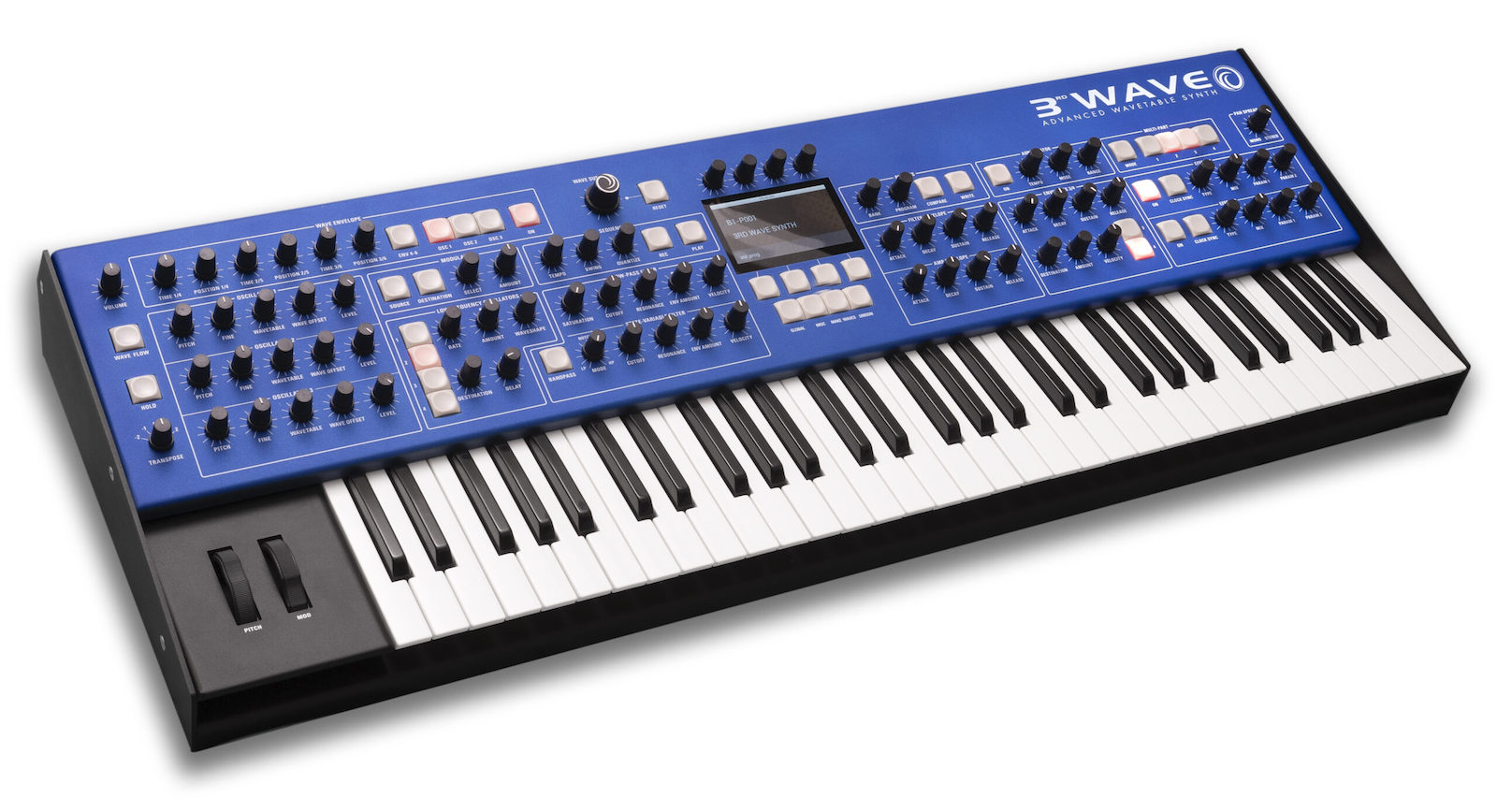
Reading off the specs, it's hard not to be impressed by what the 3rd Wave offers. A generous 24-voices may be divided into four parts for multitimbral performance, and each voice itself provides three wavetable oscillators—there's no shortage of sound generation here! Speaking of those oscillators, they can function as retro PPG-style wavetables, dense modern wavetables, or model and analog waveform. And no wavetable would be complete without a stunning filter, there are, in fact, two available on 3rd Wave: a contemporary version of the iconic Dave Rossum 2140 for 24dB/oct lowpass filtering, and a continuously variable SVF.
There's more to the 3rd Wave story: onboard sequencing, powerful digital effects, and an onboard wavetable editor with a "sample-to-wave" function. Like all great wavetable synths, the modulation capabilities are generous as well—between 16 assignable slots and 12 fixed slots, 27 sources and 114 destinations, intricate sound design opportunities await. We're certainly eager to learn more about 3rd Wave and Groove Synthesis in the near future, but in the meantime, expect these to be available around August 2022.
Motorized Control: Melbourne Instruments NINA
One of the biggest hits of NAMM 2022 was NINA, a lovely-looking 12-voice polyphonic synthesizer from new Australian manufacturer Melbourne Instruments. Such a tremendously warm welcome for NINA is, if not necessarily expected, then certainly well-deserved. Melbourne Instruments did many things right with this instrument, but two stand out in particular: a clever blend of digital and analog technologies, and motorized rotary encoders. Yes, that is right: all of the parameter knobs on NINA are motorized. This, for the first time in synthesizer history, bridges the gap between the saving of settings and the actual states of the controls, therefore eliminating the mildly annoying issues of having to manually search for the correct knob positions once you change a preset on a digital synth, as well as offering an age-old solution to saving presets on analog synthesizers. And a particularly great creative application of having motorized encoders is the ability to gradually interpolate between two different states of all synthesizer parameters. It is also important to note that the motors used are long-lasting zero wear encoders that replicate the feel and behavior of analog potentiometers. The encoders actually come equipped with haptic feedback, which changes whether they feel smooth or notched depending on the synth's settings. The behavior of the motors is silent, so you won't need to worry about an extra layer of unwanted buzzing noise added to your workflow.
So what about the overall architecture of the synthesizer? As mentioned earlier, NINA is a hybrid analog-digital synthesizer. It features three radically different oscillators. First, there is an analog variable-shape triangle VCO that can smoothly morph between triangle and sawtooth waveshapes, and it can also be blended in with a square wave. On top of that, VCO1 also has a dedicated Sub oscillator. The second VCO is an FPGA-based oscillator that can be hard-synced to the first oscillator. The sound of the third oscillator comes from digital wavetables, and thus it has a great timbral variance. Moreover, Melbourne Instruments added a ring-modulated output of XOR between VCO one and two inspired by the Moog Concertmate MG-1. And if that wasn't enough, the website also mentions that NINA has a sampling capability—however, at the moment we are not entirely sure about the scope of that feature.
The filter in NINA is also a Moog-flavored analog 4-pole transistor ladder design applied per voice, which complements the uniquely diverse concoction of oscillators very well. What is particularly interesting about the filter here is that it is endowed with a highly-emphasized pre-filter drive stage with a wide dynamic range. Thus, the filter has a secondary function as an overdrive/distortion-like effect ranging from subtle saturation to high-gain fuzz. NINA is also equipped with a selection of DSP effects including lush reverbs, and warbly delays. Furthermore, the synthesizer sports novel stereo infinite panning effects made possible by 4 quadrant digitally controlled amplifiers. This, of course, translates to the highly nuanced and intricate spatialization of sounds.

In terms of modulation sources, NINA does not disappoint either. First, there is the classic subtractive synth trio: a four-stage filter envelope, a four-stage amplitude envelope, and an LFO. Then, there is a comprehensive sequencer. And lastly, you can bring up to four external CV sources into the synthesizers. Importantly, NINA features an extensive modulation matrix, which allows any modulation source to be easily assigned to any of the instrument's parameters.
Clearly, there is a lot to be excited about here. But before we wrap up, it is necessary to mention that NINA is running on open-source software powered by Raspberry Pi computer, which makes it infinitely hackable. This is certainly attractive to power users, but also promises an emergence of a new dynamic community. Creators expect that in the future NINA can become a host for highly individualized variations of the instrument. But that is much later, as it will take a bit of time and more development before NINA will become widely available. Melbourne Instruments is soon to launch the Kickstarter campaign for NINA, so if you want to jump on the train soonest, make sure to click the "Request Notification" button on the company's website. We are very much looking forward to seeing this synthesizer out and in the hands of artists.
Shivers and Shimmers: Collision Devices Nocturnal
When a piece of gear is tailored to one artist's specific needs, the result can be either something that is too niche or, contrarily, it can turn out to be an apt response to the unvoiced dreams of the many. In the case of Nocturnal by Collision Devices, it is likely the latter.
Born out of collaboration with the company's friend, Nocturnal combines three powerful effects in one box: Modulated Delay (Dusk), Dynamic Tremolo (Night), and Shimmer reverb (Dawn). Each of the effects can be engaged individually, and when combined together or in any combination with each other they can be used to create infinitely rich, and unfathomably beautiful textures. What's more, each section offers a wide range of parameters, therefore presenting a framework for great sonic diversity.
While we can easily imagine this pedal on anyone's pedalboard (it is that flexible, and great-sounding), Nocturnal's potential to summon evolving and otherworldly sonic landscapes ostensibly make it particularly attractive to fans of shoegaze and ambient tones.
Austrian Audio OD303
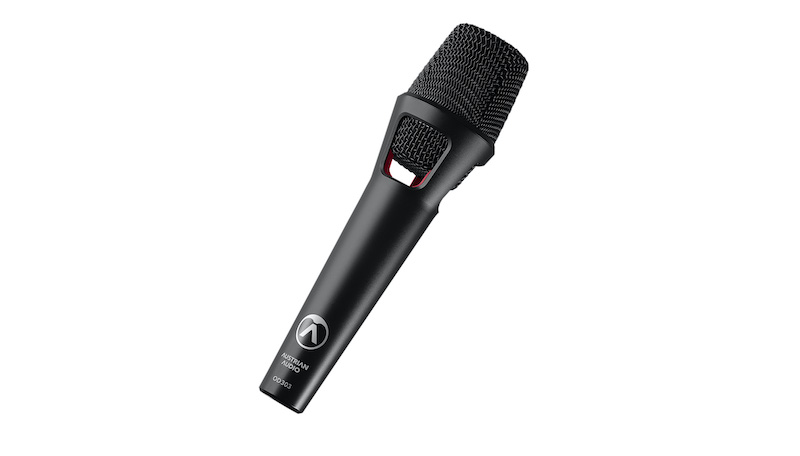
Bringing their magnificent microphone design sensibilities to their most accessible price point yet, the new OD303 is a durable dynamic microphone equally at home on stage or in the studio. As found in other Austrain mics like the OD505, OD303 offers proprietary Open Acoustic technology, which provides extraordinary feedback management, along with a solid hypercardioid polar pattern and excellent frequency response. There's also the unique 3D Pop Noise Diffuser, which combats booming plosives before hitting the capsule. Lightweight and elegantly designed, we foresee this microphone bringing the Austrian Audio sound into the hands of more producers, engineers, and musicians than ever before.
But That's Not All...
Of course, NAMM was full of countless other amazing vendors and instruments—many of which we haven't covered in-depth in this article. Many instruments we didn't cover here were recently discussed extensively in ourcoverage of Superbooth 2022, so we recommend checking that out to be sure you're up-to-date with all the most interesting recent gear.
So, what were some of the other highlights? Well, NAMM 2022 was the first American outing of the brand new Oberheim OB-X8, a stunning new bi-timbral analog synthesizer, and the first new Oberheim product in decades. Dreadbox showed forthcoming new pedals; 4ms showed their newest series of modules (covered in our Superbooth article); Polyend showed their Play sample-based groovebox; Eventide showed Misha, their forthcoming Eurorack instrument/controller. And truthfully, there was much more beyond that—but as you likely know, conventions like NAMM are a whirlwind. No doubt we'll see the results of this year's show spread out over the coming months and years, as these new instruments all surface and become a reality.


